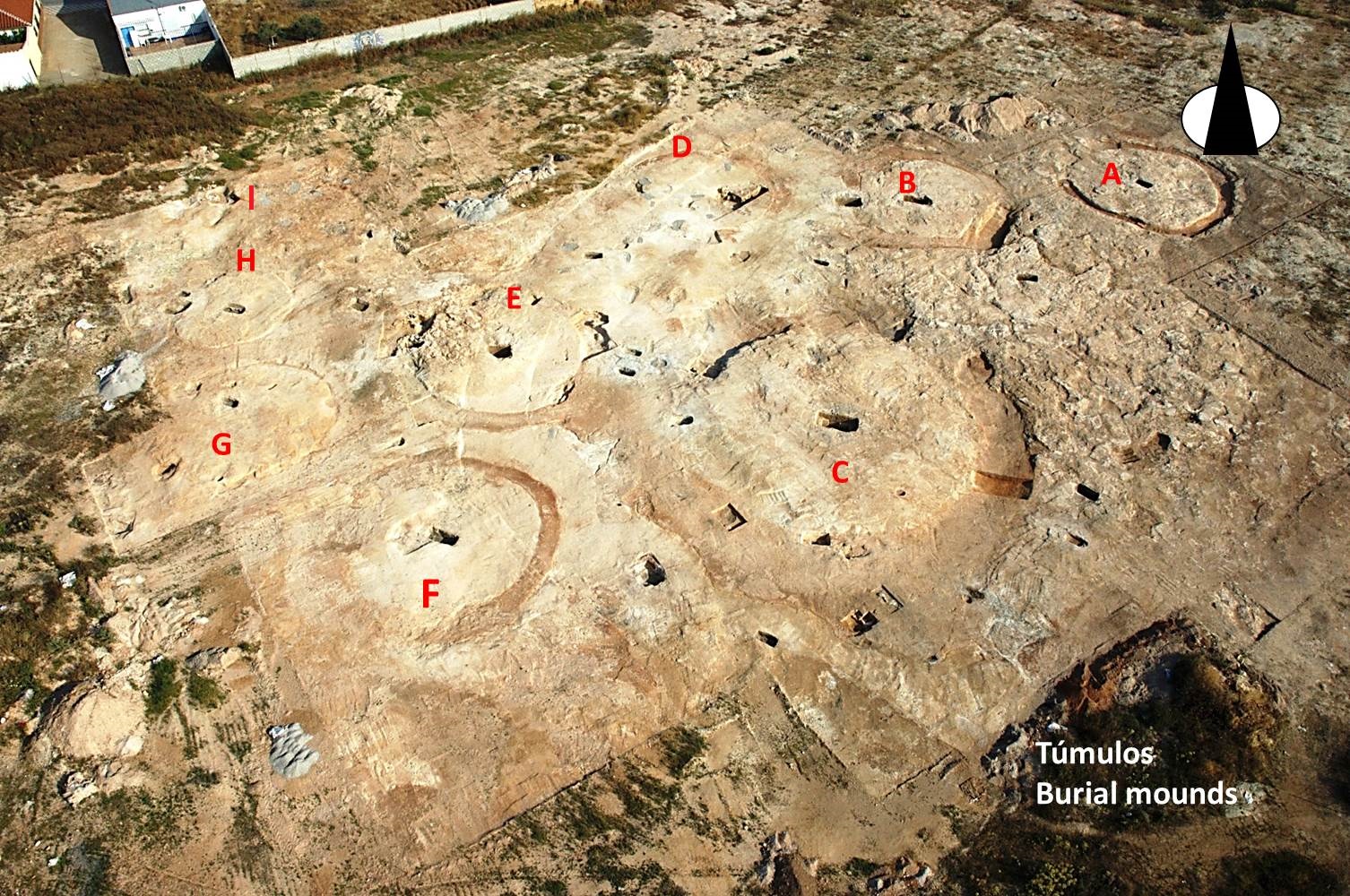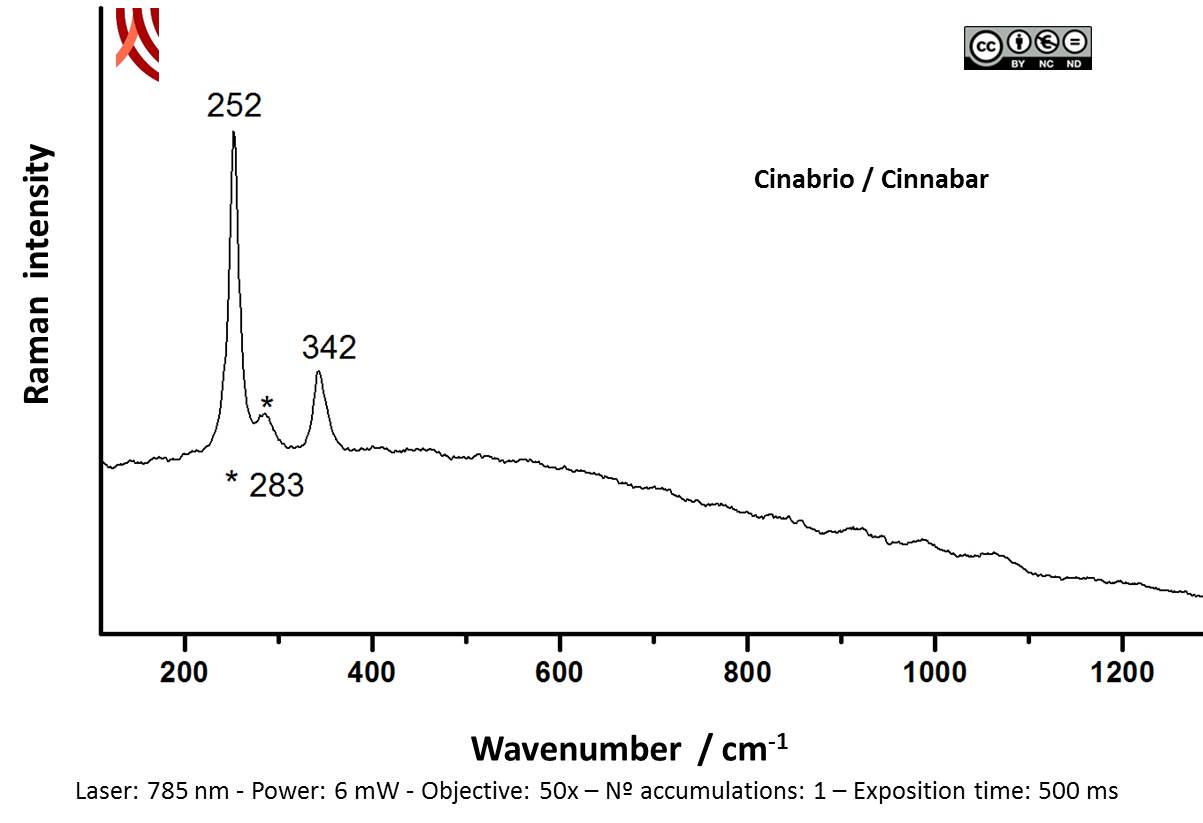Ceramic vessel 134. Grave 233. Cemetery of La Noria.
Technically, use of cinnabar means decoration after firing, because cinnabar starts to change above 250 ºC, becomes black HgS between 335 and 386 °C, and sublimates at 584°C. Unlike other cases where cinnabar is applied on a layer of gypsum, red decoration in the vessel under study was applied directly on the ceramic surface.
Cinnabar is known to have been used in the Iberian Peninsula in megalithic contexts and for the decoration of Iberian sculptures of a highly symbolic value such as the Lady of Baza and the Lady of Elche. The case under study here confirm that cinnabar was also used for decoration of the ceramic vessels of grave goods, which is further evidence of its exclusiveness.
Dimensions
: 7.5 Centimeters
: 9 Centimeters
Materials
pottery
Temporal
: Iberian, Iberians
: Late 6th ct. BC.-early 5th ct. BC
Spatial
: Cemetery of La Noria
: Fuente de Piedra, Málaga, Spain
: WGS84
Copyrights
Creative Commons - Attribution, Non-Commercial, No Derivatives (BY-NC-ND)
References
Andrino, M., Sánchez, P. J., Cumpían, A. y López, S. (2008):“Una necrópolis de incineración de las etapas iniciales de la Edad del Hierro en la comarca de Antequera. Resultados de la intervención arqueológica de urgencia en la parcela ur-6, Fuente de Piedra, Málaga”. Varia, 9. 359-378.
Digital Resources
-
 Instituto Universitario de Investigación en Arqueología Ibérica
Instituto Universitario de Investigación en Arqueología Ibérica Creative Commons - Attribution, Non-Commercial, No Derivatives (BY-NC-ND)
Arquiberlab
http://creativecommons.org/licenses/by-nc-nd/3.0/ -
 Instituto Universitario de Investigación en Arqueología Ibérica
Instituto Universitario de Investigación en Arqueología Ibérica Creative Commons - Attribution, Non-Commercial, No Derivatives (BY-NC-ND)
Arquiberlab
http://creativecommons.org/licenses/by-nc-nd/3.0/ - Instituto Universitario de Investigación en Arqueología Ibérica
Creative Commons - Attribution, Non-Commercial, No Derivatives (BY-NC-ND)
Arquiberlab
http://creativecommons.org/licenses/by-nc-nd/3.0/ -
 Instituto Universitario de Investigación en Arqueología Ibérica
Instituto Universitario de Investigación en Arqueología Ibérica Creative Commons - Attribution, Non-Commercial, No Derivatives (BY-NC-ND)
Arquiberlab
http://creativecommons.org/licenses/by-nc-nd/3.0/ -
 Instituto Universitario de Investigación en Arqueología Ibérica
Instituto Universitario de Investigación en Arqueología Ibérica Creative Commons - Attribution, Non-Commercial, No Derivatives (BY-NC-ND)
Arquiberlab
http://creativecommons.org/licenses/by-nc-nd/3.0/ - Instituto Universitario de Investigación en Arqueología Ibérica
Creative Commons - Attribution, Non-Commercial, No Derivatives (BY-NC-ND)
Arquiberlab
http://creativecommons.org/licenses/by-nc-nd/3.0/ -
Number of analysis: 7 on the red decoration, 2 on the ceramic paste.
Creative Commons - Attribution, Non-Commercial, No Derivatives (BY-NC-ND)
Arquiberlab
http://creativecommons.org/licenses/by-nc-nd/3.0/
Activities
Archaeometric analysis Physical-chemical analysis Cerámic. Analysis of decoration.
| |
Raman Microscopy Mineral analysis of the red decoration Non destructive. Surface cleaning. Sample pretreatment is not required. Direct measurement. Micro-Raman Spectroscopy Portable BWS445-785S innoRam™ Raman spectrometer (B%26WTEK, Inc., Newark, USA) with a 785 nm excitation laser (maximum power of 300 mW) and a 4.5 cm-1 spectral resolution. The Raman microprobe can be mounted on a tripod with motorized XYZ axis (MICROBEAM S.A, Barcelona, Spain) or on a microscope sampling stage (B%26WTEK, Inc., Newark, USA). | |
X-Ray Fluorescence Elemental analysis of the red decoration Non destructive. Surface cleaning. Sample pretreatment is not required. Direct measurement. Energy dispersive X- ray fluorescence (EDXRF) EDAX (model Eagle III) fluorescence spectrometer (CITI, University of Seville). This spectrometer is equipped with a microfocus X-ray tube with an Rh anode, a polycapillary lens for X-ray focussing, and an 80 mm2 energy dispersive Si-(Li) detector. The sample chamber incorporates an XYZ motorized stage for sample positioning. A high resolution microscope is used to position the sample on the desired distance from the polycapillary. To increase the sensitivity of the low Z elements, the sample chamber can be brought under vacuum. For the analysis of the samples, a spot size of 300 μm was chosen at an operating X-ray tube voltage of 40 kV. The tube current was adapted for each sample in order to optimise the detection of X-rays. |
































